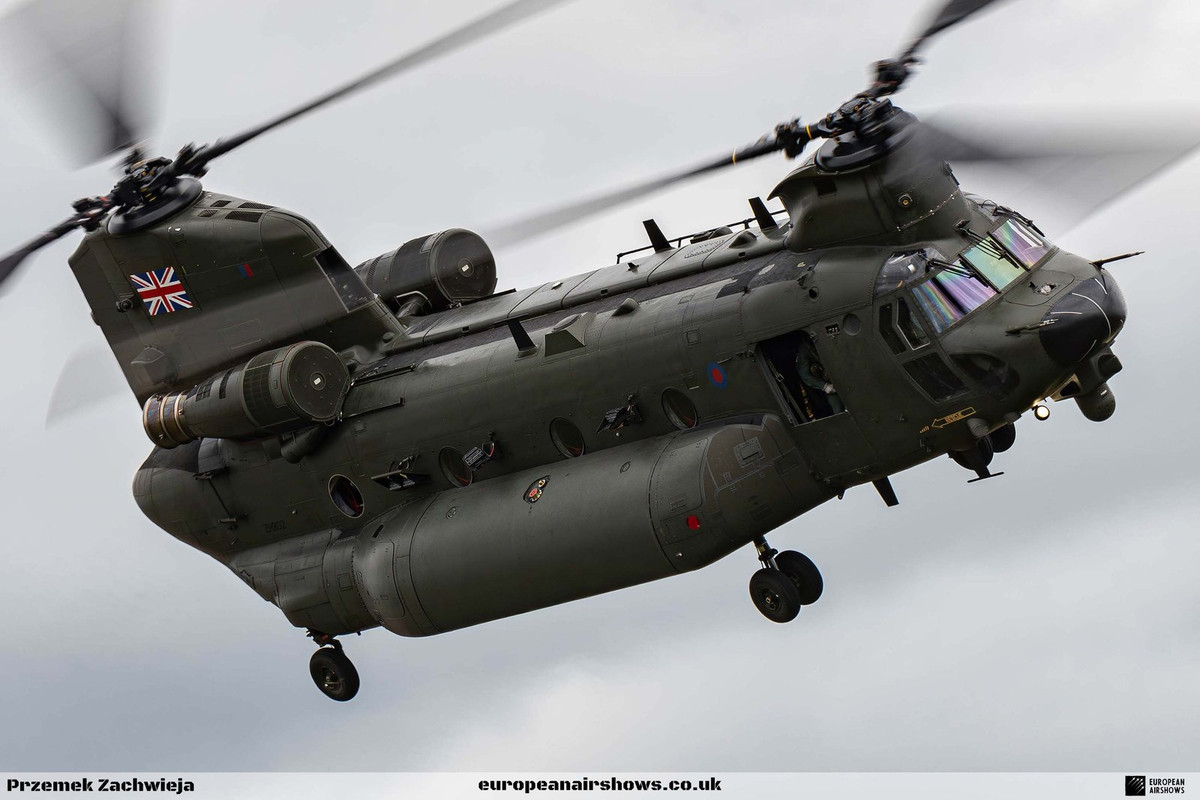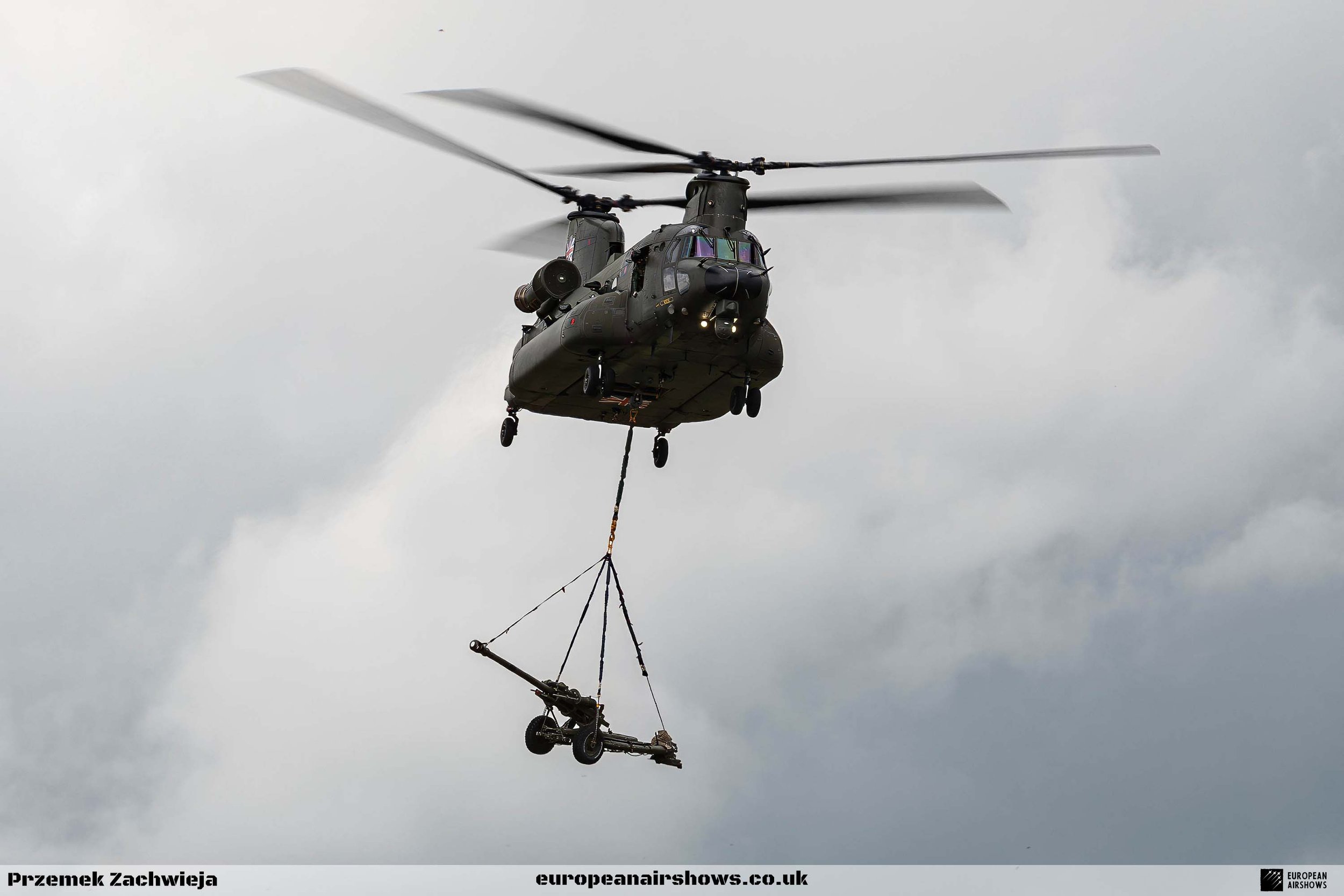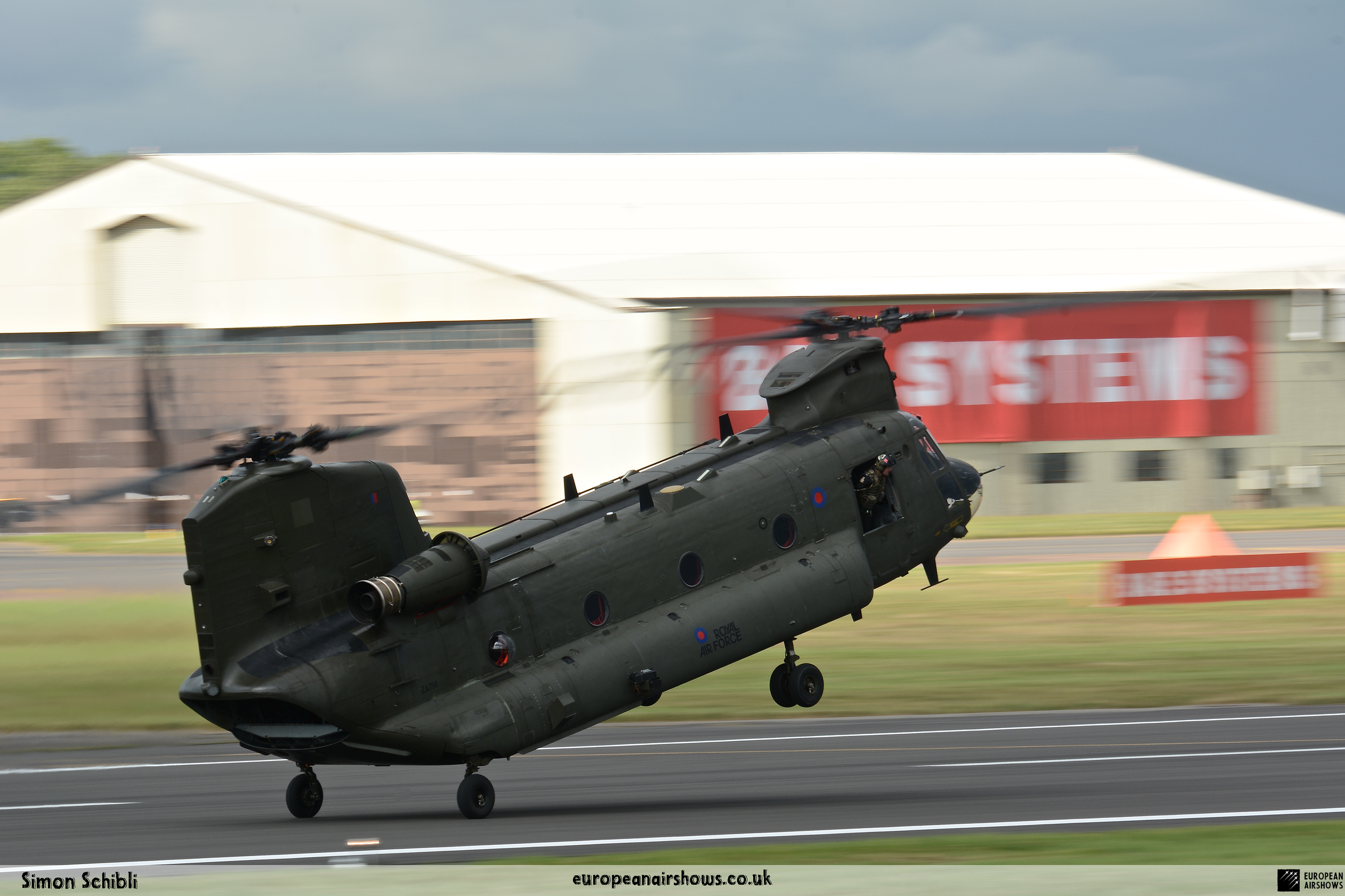
RAF Chinook Display Team
Performer Information
The RAF Chinook Display Team, stationed at RAF Odiham in Hampshire, United Kingdom, is dedicated to showcasing the capabilities of the Chinook Force. The team is composed of volunteer front-line aircrew members who balance their operational duties with the preparation and execution of display sequences at air shows and public demonstrations.
The Chinook Display Team was established in response to the increasing demand for demonstrations involving the Chinook helicopter. Unlike other dedicated RAF aerobatic teams, such as the Red Arrows or the Battle of Britain Memorial Flight, the Chinook Display Team members continue to perform their primary military missions while simultaneously engaging in display training.
The Odiham squadrons provide Chinook helicopters for both demonstration flights and operational missions within the UK. The team has maintained its commitment to public displays even during active deployments, such as in Afghanistan in 2013. The Chinooks utilized by the team are versatile aircraft that serve multiple roles, including troop transport, logistical resupply, and battlefield casualty evacuation.
The display routines of the Chinook Display Team are meticulously choreographed to minimize stress on the aircraft’s airframe. In scenarios where operational demands are high, such as in 2024, the team adapted their display to a role demonstration, which highlights the aircraft’s capabilities in a manner relevant to military operations. Role demonstrations are less intensive in terms of training and preparation compared to full airshow displays, allowing the team to efficiently showcase the Chinook’s operational capabilities without overextending their resources.
Specifications
Crew
3
Capacity
55 troops
Length
98 ft 10.7 in (30.142 m)
Height
18 ft 7.8 in (5.685 m)
Max Speed
170 kn (200 mph, 310 km/h)
Range
400 nmi (460 mi, 740 km)
Service Ceiling
20,000 ft (6,100 m)
Rate of climb
1,522 ft/min (7.73 m/s)
About the Aircraft
The Boeing CH-47 Chinook is a tandem-rotor heavy-lift helicopter initially developed by the American rotorcraft manufacturer Vertol and currently produced by Boeing Defense, Space & Security. Known for its substantial lifting capacity, the Chinook is one of the heaviest lifting helicopters in the Western world. The name “Chinook” is derived from the Native American Chinook people from the Pacific Northwest, specifically the regions of Oregon and Washington state. The helicopter’s design emphasizes versatility and performance, making it a vital asset for both military and civilian operations.
Development of the Chinook began in 1957 when the U.S. Army sought a replacement for the piston-engine Sikorsky CH-37 Mojave with a gas turbine-powered helicopter. The initial prototype, designated YHC-1A, was derived from the Vertol Model 107 but was ultimately deemed unsuitable for the Army’s requirements. Consequently, the Army commissioned a larger variant, the HC-1B, which made its first flight in 1961 and was later redesignated as the CH-47A in 1962. The Chinook features multiple loading options, including a wide rear ramp and three external cargo hooks, facilitating the transport of various cargo types. With a maximum speed of 170 knots (200 mph), the Chinook was significantly faster than its contemporaries when it entered service and remains one of the fastest helicopters in the U.S. inventory.
Over the years, the Chinook has undergone numerous upgrades, with notable variants such as the CH-47D introduced in 1982, which included enhanced engines, composite rotor blades, and advanced avionics. The latest version, the CH-47F, features digitized flight controls and powerful Honeywell engines, ensuring its operational relevance. The Chinook has been widely exported, with the U.S. Army and the Royal Air Force as its primary operators, while civilian variants like the Boeing Vertol 234 serve in various roles, including firefighting and construction support. As of recent years, several countries, including Canada, India, and Germany, have procured the CH-47F model, further solidifying the Chinook’s status as a key player in heavy-lift aviation.
Did You Know?
- The RAF Chinook Display Team is uniquely composed of volunteer front-line aircrew who continue their primary military missions while training for air show performances.
- The RAF Chinook fleet is expected to remain in service until at least 2060, thanks to ongoing sustainment and upgrade programs.
- The RAF operates the largest Chinook fleet outside of the United States, with sixty helicopters in active inventory as of 2015.
- RAF Chinooks have been pivotal in numerous conflicts and operations, including the Falklands War, the Balkans, Northern Ireland, Iraq, and Afghanistan.
- The Chinook can carry up to 55 troops or approximately 10 tonnes of mixed cargo, showcasing its significant transport capacity.
Test Your Knowledge
1. What is the primary base of the RAF Chinook Display Team?
Chinooks in the UK
The Boeing Chinook is a large tandem rotor helicopter operated by the Royal Air Force (RAF) and is the largest fleet of Chinooks outside the United States. The RAF Chinook fleet has been instrumental in various military operations, including the Falklands War, the Balkans, Northern Ireland, Iraq, and Afghanistan. Since the early 1980s, Chinooks have provided heavy-lift support and transport capabilities across all branches of the British armed forces, with the primary base located at RAF Odiham in England. As of 2015, the RAF had sixty Chinooks in active service, and in 2018, the UK government requested to purchase an additional sixteen helicopters to enhance its capabilities. The Chinook is expected to remain in service with the RAF until the 2040s.
The procurement of Chinooks by the UK began in earnest in the late 1970s, with an order for thirty helicopters announced to replace the Westland Wessex. These helicopters, designated Chinook HC1, entered service in December 1980 and were equipped with Lycoming T55-L-11E engines. Subsequently, the RAF upgraded its fleet, returning the original HC1 helicopters to Boeing for modernization to the CH-47D standard, resulting in the Chinook HC2 designation. The HC2 variant featured significant improvements, including composite rotor blades and advanced avionics. Additional orders followed, including the Chinook HC3, which was intended for special forces but faced significant procurement challenges that delayed its operational capability.
In the years following, the RAF continued to modernize its Chinook fleet through programs such as Project Julius, which upgraded existing HC2 and HC3 helicopters to the HC4 and HC5 standards. These upgrades included new digital flight deck avionics, enhanced engines, and improved operational capabilities. As of February 2022, the RAF’s Chinook fleet comprises HC5, HC6, and HC6A variants, with the HC6 designation assigned to a new batch of CH-47F-derived helicopters. Looking ahead, the Ministry of Defence announced plans in March 2024 to acquire fourteen Chinook Extended Range (ER) models, which will provide double the range of the older Chinooks they will replace, ensuring the Chinook remains a vital asset for the UK’s military operations.



































